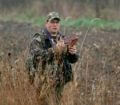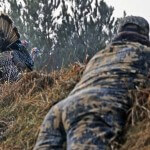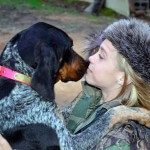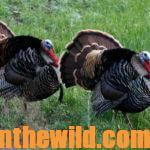John’s Note: Matt Van Cise of Brookville, Pennsylvania, has been setting the turkey-calling world on fire and also is an avid turkey hunter. He’s won the Senior Open Division of the World Turkey Calling Championship, the Wild Turkey Bourbon Grand National Championship, five World Open Championships, four Grand National Championships, three U.S. Open Championships and numerous others.
I only use decoys when I’m hunting field gobblers. I’ve never used decoys in the woods. One of the toughest turkeys to take in the woods is a gobbler with hens. I’m sure you’ve read that to take this turkey you have to agitate and aggravate the boss hen with your calling. However, that tactic doesn’t often work. I just leave that bird alone when I know he’s with hens. I’ll come back and hunt him later in the morning or on another day. Often the gobbler will leave those hens at 10:00 or 11:00 am, and you’ll have a chance to call that bird.
 I don’t waste much time hunting one turkey. I have hundreds of places I can hunt, so if a gobbler has hens with him or refuses to come to my calling, I back out of the woods and hunt another gobbler. I don’t like to put hunting pressure on the birds I’m trying to take. I’d rather find another turkey that’s gobbling and coming to me, instead of wasting the morning aggravating a gobbler I probably won’t be able to take. That’s what makes my hunting experiences different. Most hunters will continue to call a turkey, trying to get him to come in to the gun, even if that turkey doesn’t want to come. Some hunters say, when you call a gobbler over and over, and he won’t come to you, you’re educating that gobbler. I think the longbeard just gets bored with your calling and walks off. Instead of continually attempting to work a stubborn gobbler, you’ll be far more successful if you’ll pick up and move. Go find another turkey that wants to come to your calling.
I don’t waste much time hunting one turkey. I have hundreds of places I can hunt, so if a gobbler has hens with him or refuses to come to my calling, I back out of the woods and hunt another gobbler. I don’t like to put hunting pressure on the birds I’m trying to take. I’d rather find another turkey that’s gobbling and coming to me, instead of wasting the morning aggravating a gobbler I probably won’t be able to take. That’s what makes my hunting experiences different. Most hunters will continue to call a turkey, trying to get him to come in to the gun, even if that turkey doesn’t want to come. Some hunters say, when you call a gobbler over and over, and he won’t come to you, you’re educating that gobbler. I think the longbeard just gets bored with your calling and walks off. Instead of continually attempting to work a stubborn gobbler, you’ll be far more successful if you’ll pick up and move. Go find another turkey that wants to come to your calling.
Some gobblers won’t respond to a turkey call. Perhaps those turkeys have been shot at or wounded before, or maybe they just don’t want to breed. I usually leave those birds alone. Instead of calling to tough turkeys, I prefer to spend more time scouting that turkey and finding the locations he frequents. When I put on my Mossy Oak (www.mossyoak.com) camouflage and go into the woods to hunt a turkey, I spend more time hunting (learning all I can about a turkey’s habits) than I do calling to that turkey. Being proficient as a turkey caller has made me more successful as a turkey hunter, but I rely more on my woodsmanship and my hunting skills to get me where a turkey wants to be, rather than attempting to call a gobbler in to where I want to hunt.
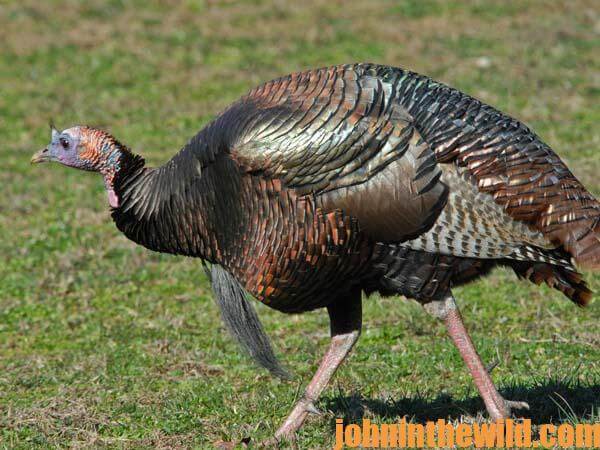 My strategy is to get as close to the gobbler as fast as I can when I hear him gobble. If a gobbler is talking to me, I want to take him quickly before he changes his mind. If I’m hunting later in the morning, and that turkey answers my call with a gobble, I’ll start moving toward that bird. I call every 50 yards as I travel toward him. I want to get him so excited that he almost chokes himself gobbling. I want to convince him I’m a hen coming to him. Sometimes this tactic can bite you, and you’ll spook the gobbler. That’s happened to me. No tactic, strategy or calling technique will work every time you go turkey hunting.
My strategy is to get as close to the gobbler as fast as I can when I hear him gobble. If a gobbler is talking to me, I want to take him quickly before he changes his mind. If I’m hunting later in the morning, and that turkey answers my call with a gobble, I’ll start moving toward that bird. I call every 50 yards as I travel toward him. I want to get him so excited that he almost chokes himself gobbling. I want to convince him I’m a hen coming to him. Sometimes this tactic can bite you, and you’ll spook the gobbler. That’s happened to me. No tactic, strategy or calling technique will work every time you go turkey hunting.
I’m in the woods often and moving through the woods regularly. I rely heavily on my Mossy Oak camouflage to keep the gobblers from seeing me. During the early season, I prefer to hunt with Mossy Oak Break-Up, because we don’t have a lot of green in the woods during the early season in Pennsylvania. Later in the season, when the trees and bushes start putting on fresh growth and sprouting green leaves, I prefer Mossy Oak Obsession that has more green in the pattern. I even camouflage my feet and legs by wearing LaCrosse (http://www.lacrossefootwear.com/) rubber boots with Mossy Oak camo on them in the Treestand or Break-Up patterns. I also have a Mossy Oak hat, face net and gloves. The only parts of my body not covered in camo are my glasses and my eyes.
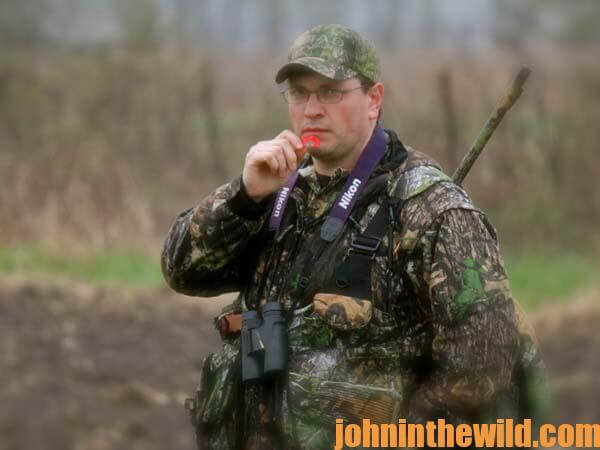 To learn more about turkey hunting from the masters, get these Kindle eBooks and print books by John E. Phillips, including: “The Turkey Hunter’s Bible (available as an eBook or in paperback),” “PhD Gobblers: How to Hunt the Smartest Turkeys in the World,” “Turkey Hunting Tactics,” (also available in an audio book from http://www.audible.com/pd/Self-Development/Turkey-Hunting-Tactics), “The 10 Sins of Turkey Hunting with Preston Pittman” and “Outdoor Life’s Complete Turkey Hunting.” Click here to get these books.
To learn more about turkey hunting from the masters, get these Kindle eBooks and print books by John E. Phillips, including: “The Turkey Hunter’s Bible (available as an eBook or in paperback),” “PhD Gobblers: How to Hunt the Smartest Turkeys in the World,” “Turkey Hunting Tactics,” (also available in an audio book from http://www.audible.com/pd/Self-Development/Turkey-Hunting-Tactics), “The 10 Sins of Turkey Hunting with Preston Pittman” and “Outdoor Life’s Complete Turkey Hunting.” Click here to get these books.
To get John’s book, “The Turkey Gobbler Getter Manual,” for free, go to www.johninthewild.com/free-books to download.


